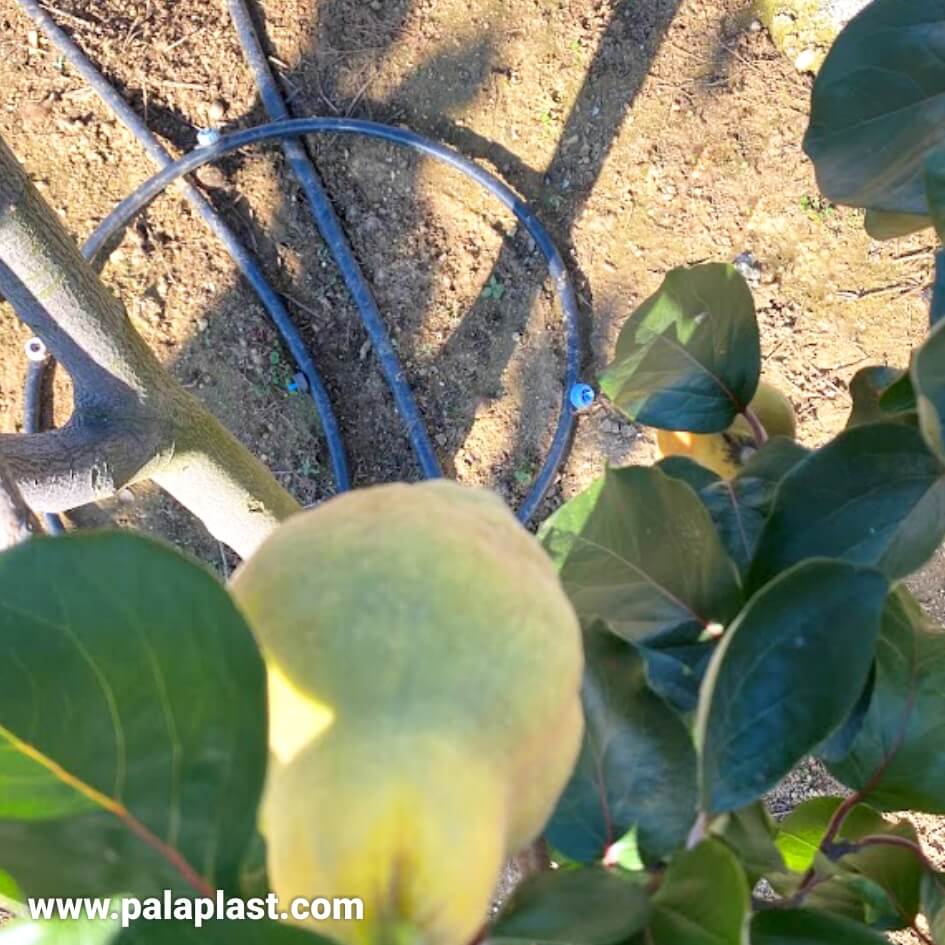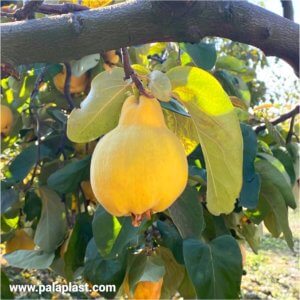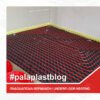QUINCE TREE
Scientific name: Cydonia oblonga of the Rosaceae family.
- In biblical texts quince is referred to as the “Golden Apple”, while in ancient Greece it was offered on the wedding day as a symbol of fertility. It is also mentioned in Homer’s Odyssey as an ornamental tree, while in Roman times in the texts of Pliny the Elder (Roman writer, naturalist and natural philosopher) praised its medicinal properties.
- The quince originates from Western Asia, with its center of origin being the areas around the Caucasus such as the regions of Armenia, Azerbaijan, Iran, Southwestern Russia and Turkmenistan, with a long history of cultivation. Whereas in the region of Mesopotamia – present day Iraq, the cultivation of the quince preceded that of the apple tree. From these areas it spread to the countries bordering the Himalayan Mountains to the East, and through Europe to the West.
- Worldwide production of quinces according to FAO reached 692,262 tons in 2017. Turkey is the largest producing country, while together with China they hold 41% of the world production. It is followed by countries such as Uzbekistan (about 15%), Iran (about 11%), Morocco (about 6.6%) and Azerbaijan (about 4.3%).
- It has important medicinal properties, as quince fruits are rich in pectin (soluble fiber with anti-diabetic action), essential oils, high percentage of vitamin C and many nutrients such as Na, K, Ca, Fe, Cu and Zn. They also have antioxidant activity and help with digestion. The wood from the quince trunk is very durable and is used for wood carvings, while the use of quince trees as rootstock for dwarf pear plants is also widespread.
- Quince is a small deciduous tree, reaching a height of 8 meters, with an average height of 3-4 meters. It is a tree for mild temperate regions, while in the warmer regions it produces better quality fruits. Quince trees have moderate needs in low winter temperatures in order to stop bud dormancy (200 – 500 hours in temperatures <7⁰C), while it can withstand winter temperatures down to -27⁰C.
- Quince can be grown in a wide variety of well-drained soils, preferably in medium soils with the proper amount of moisture the plant needs in the summer. It adapts better in neutral or slightly acidic pH, while not yielding to soils reach in CaCo₃. Quince plants should be protected from strong winter winds and do not grow well in fields lacking in sunshine. Finally, quince trees can be grown in areas with an altitude of up to 900 meters.


IRRIGATION OF QUINCE TREES
Quince compared to other pome fruits (apple and pear) need more frequent watering with smaller amounts of water, while in order to achieve a satisfactory production it should be watered frequently during the summer so that it does not lack water. Thus, quince watering is necessary during the months of May and June, in order to increase the vegetation and production of the trees, as well as during the months of July and August to help bud development and to increase the size of the fruits. However, care must be taken in the amount of water provided, as excessive watering can lead to intense onset of the disease “Fire Blight”, caused by the bacterium Erwinia amylovora, which can destroy under certain conditions an entire orchard in a single growing season.
Over the years various irrigation methods have been applied, while drip irrigation and microsprinkler irrigation have dominated in recent years.
Palaplast has a wide range of products that can be used to install a reliable and sufficient drip irrigation system and microsprinker irrigation system:
- Self-Compensating Drippers such as : AXIOS – SC (Self Compensating – Palaplast)
- LDPE Irrigation Pipes such as : DRIP-PAL, SUPER-PAL (LDPE – Palaplast)
- Punches such as : Special Punch, Punch (Punches – Palaplast)
- Pressure Compensating Driplines (Paladrip-FC – Palaplast), Driplines (Paladrip – Palaplast, Paladrip-XL – Palaplast)
- Dripline Fittings – (Dripline Fittings – Palaplast)
- Micro Fittings such as: Supporting Hook, Super Supporting Hook (Micro-Fittings – Palaplast)
- Microsprinklers such as : Pal Rotating Super Sprayer, Pal Rotating Special Sprayer, Pal Stable Special Sprayer, Pal Stable Angled Sprayer (Microsprinklers – Palaplast)
- Microfittings, such as : Spike (Micro-Fittings- Page 2 of 5 – Palaplast)
- Filters such us: In-Line Special, In-Line Large (Plastic Filters – Palaplast)



